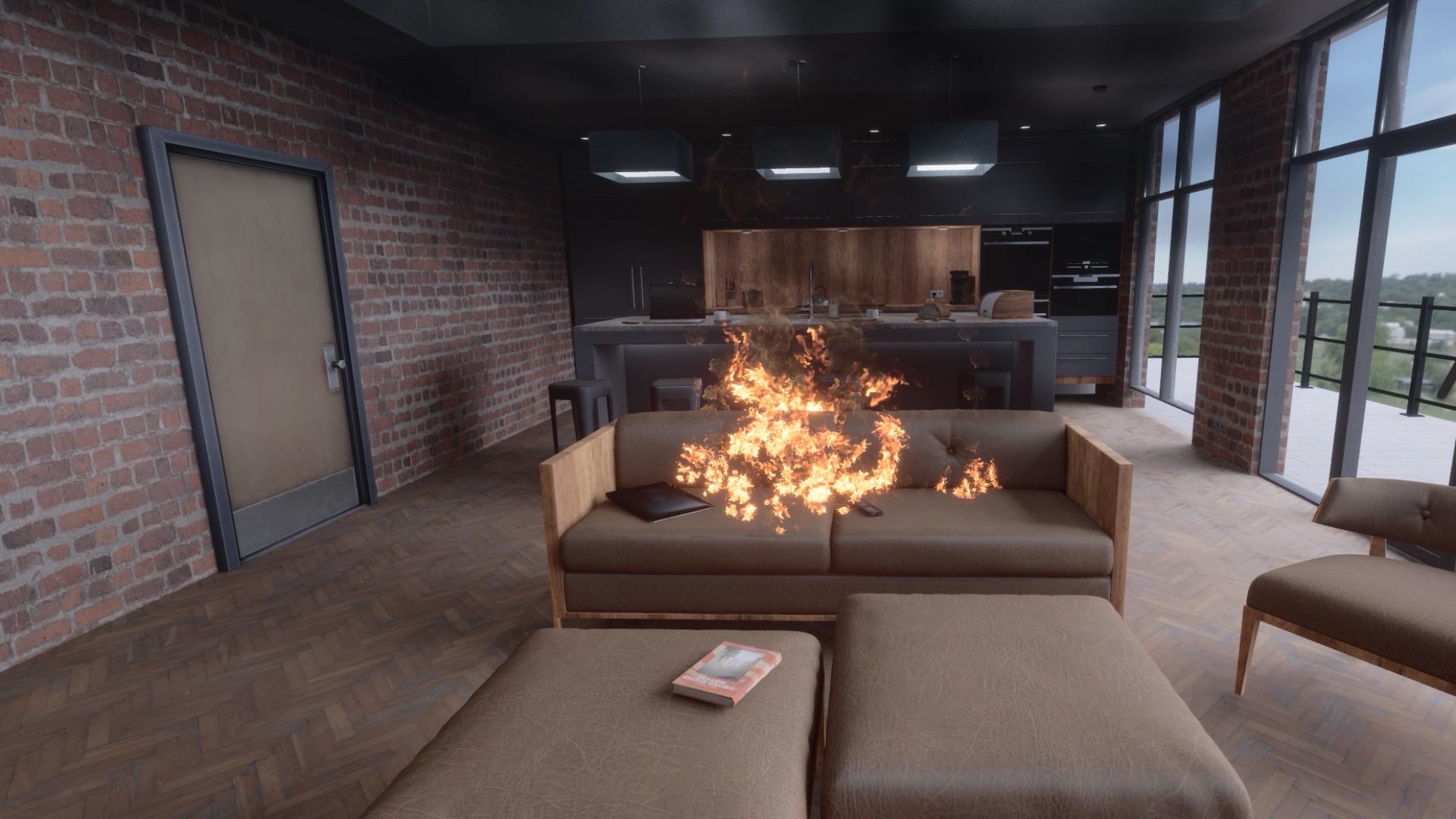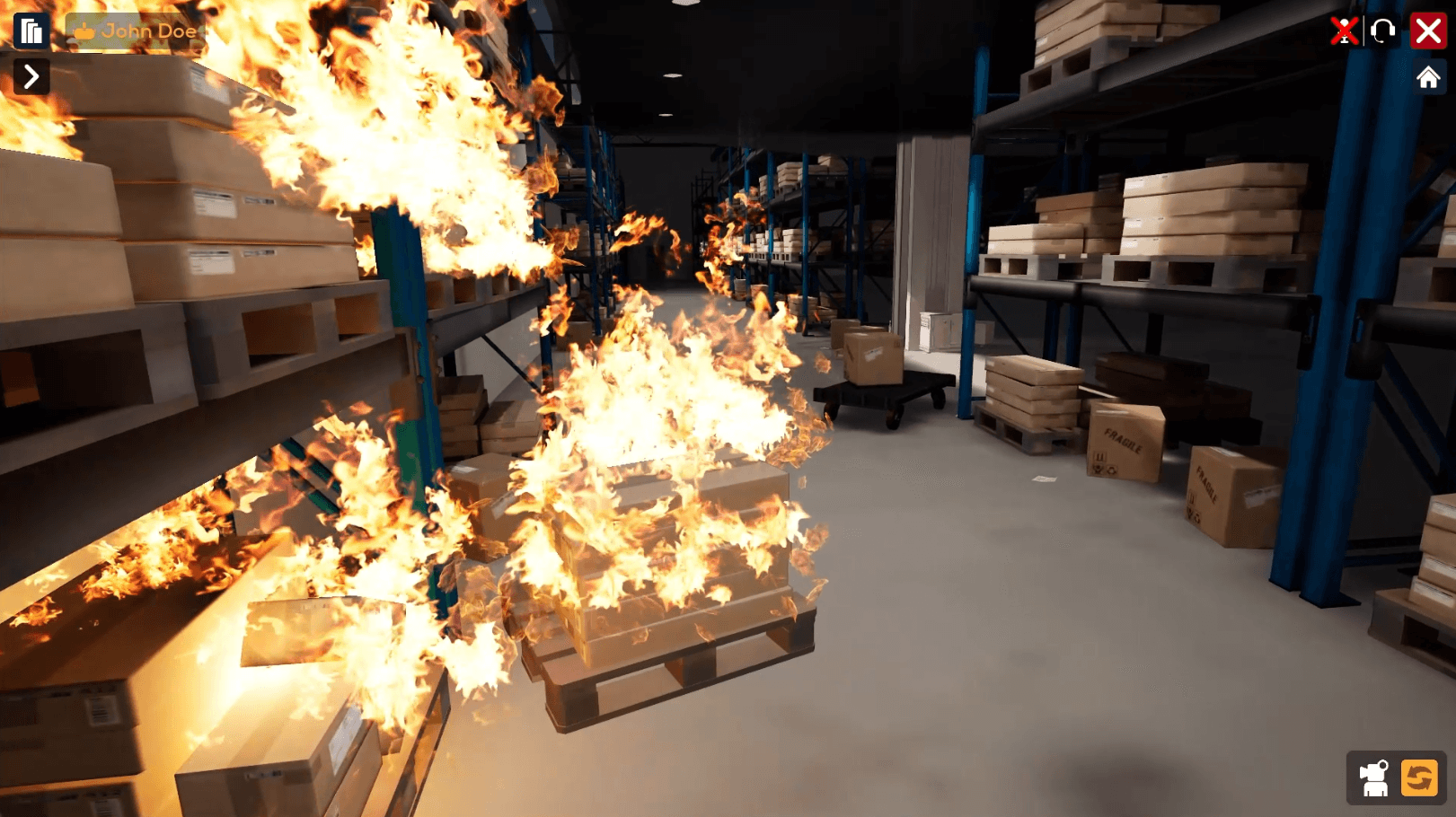Virtual Reality Fire Training: How to Keep Your Staff Safe at Work

Workplace fire safety training is a legal and moral responsibility for every organization. Yet, conventional drills often fall short, they’re costly to organize, hard to repeat, and limited to routine scenarios. Virtual reality fire training is redefining this process. It enables employees to experience realistic emergency simulations in a fully safe and controlled environment, where they can make critical decisions and learn from mistakes without risk.
VR-based training reproduces authentic fire conditions: smoke spreading across rooms, alarms sounding, extinguishers at hand, and time pressure intensifying. Trainees can walk through the environment, identify hazards, and act on evacuation or containment procedures just as they would in reality. Because no physical setup or materials are required, organizations can train employees repeatedly and track their progress over time.
Why Virtual Reality Fire Training Works
Traditional fire drills tend to be predictable, with the same exits, the same alarms, and the same outcomes. VR makes training interactive, dynamic, and data-driven.
- Realistic scenarios: Simulations are built using the organization’s actual floor plans, equipment, and safety systems.
- Safe repetition: Staff can repeat sessions as often as needed, with no material waste or disruption.
- Performance feedback: Each session captures reaction time, accuracy, and decisions under pressure, offering measurable insights.
Beyond the practical side, virtual reality increases engagement. People retain information better when training triggers emotion and immersion. Studies show VR trainees demonstrate higher confidence and faster recall in emergency situations.

The Business Case for VR Fire Training
Fire incidents cause significant human and financial losses each year. The value of virtual reality fire training lies in its ability to combine prevention, education, and efficiency.
Organizations adopting VR training report:
- Reduced risk and incident rates: Employees react faster and more calmly under pressure.
- Lower operational costs: No facility disruptions or consumables like extinguishers or props.
- Regulatory compliance: Simulations align with international fire-safety standards and documentation requirements.
- Higher employee confidence: Workers gain realistic experience in situations too dangerous to replicate physically.
The Raleigh Fire Department in the U.S. implemented VR safety simulations to improve firefighter preparedness, reporting shorter training times and higher engagement across trainees.

Industries Leading the Way
Although virtual reality fire training began in professional fire services, it’s rapidly expanding into other sectors.
- Manufacturing and Utilities: Workers practice extinguisher use and emergency shutdown procedures near equipment.
- Corporate Offices: Employees rehearse building evacuations and communication during alarms.
- Construction and Oil & Gas: Teams experience complex multi-level fires, confined-space evacuations, and explosion containment.
- Public Institutions: Schools, hospitals, and government buildings integrate VR for both staff and first responders.

Implementing a VR Fire Training Program
The transition to immersive training is smoother than most expect. OneBonsai helps organizations design simulations tailored to their unique layouts, fire risks, and procedures. Each program typically includes:
- Initial risk assessment: Mapping key hazards and existing fire protocols.
- Scenario design: Creating realistic virtual environments for varied difficulty levels.
- Deployment and training: Equipping teams with VR headsets and facilitating on-site or remote sessions.
- Analytics and optimization: Reviewing results to identify weak points and refine staff preparedness.
By combining technology and pedagogy, OneBonsai ensures the training process strengthens both individual skill and institutional resilience.
Proven Impact
The results of adopting immersive safety training are tangible. Across sectors, organizations see measurable improvements in preparedness, reaction time, and confidence. A European manufacturing client who integrated OneBonsai’s VR modules observed fewer on-site incidents and higher safety test scores within months. Globally, early adopters continue to validate the cost savings and human benefits of this approach.
Beyond the numbers, employees value VR training because it feels relevant. They’re not just told what to do, they experience it. They learn how panic feels, when to rely on instinct, and how to act when the environment turns chaotic. That emotional engagement is what makes VR-based safety education transformative rather than procedural.
Why Partner with OneBonsai
OneBonsai stands at the forefront of VR fire and safety training innovation. Our experience spans defense, energy, manufacturing, and public sectors, where we’ve developed fully interactive modules that mirror real operational risks. We provide end-to-end implementation, from scenario creation to analytics, helping safety managers build long-term, data-backed training programs.
By choosing OneBonsai, organizations not only meet compliance goals but also embed a culture of safety, one that empowers people to act decisively when it matters most.
Fire safety doesn’t have to rely on outdated drills. Virtual reality fire training offers a scalable, cost-effective, and psychologically powerful way to prepare your workforce for emergencies. It turns passive instruction into active experience, ensuring your people stay calm, informed, and safe.
Partner with OneBonsai to elevate your workplace safety standards through immersive fire training that saves time, money, and lives.

DIMITRI PIRNAY
March 15, 2022









